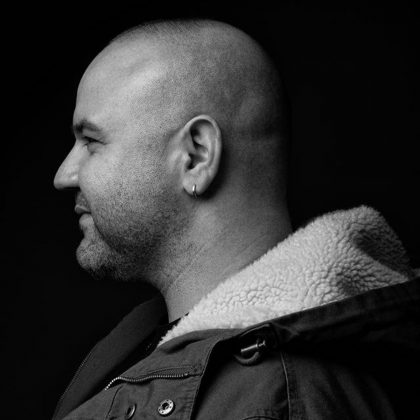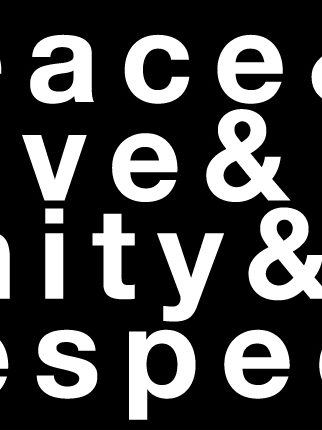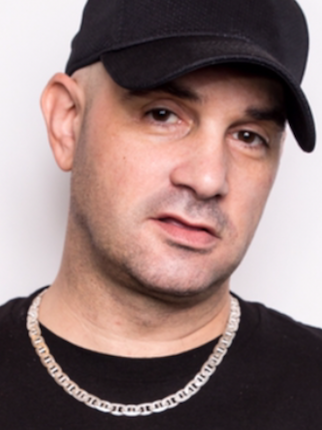Frankie Bones on the Origins of PLUR
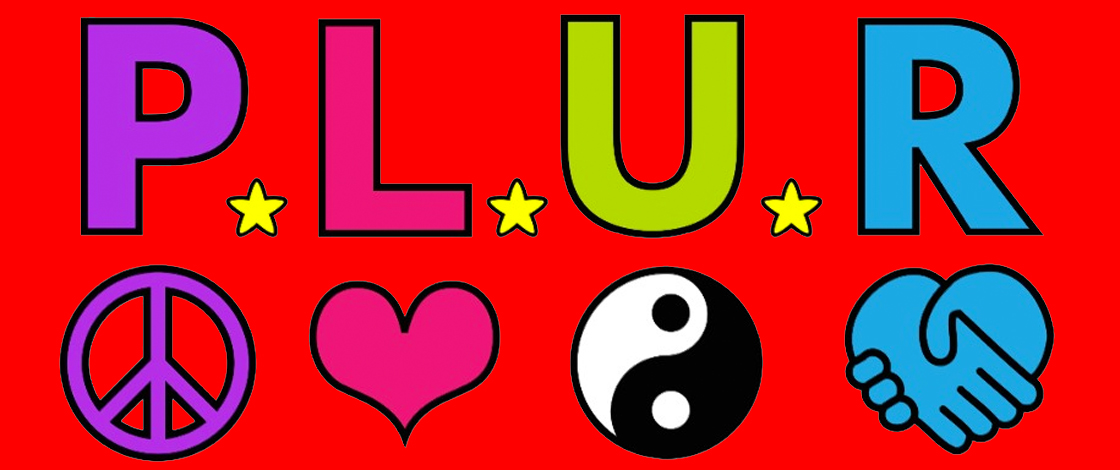
Talking to Frankie Bones is like opening a living archive of American dance music culture.
A legendary DJ from New York City, Bones went from being a local high school kid sprung on the pioneering clash of sounds emerging from his city throughout the ‘80s, to one of the then-emerging rave scene’s biggest and most influential producers.
His fateful first DJ trip to London in 1989 opened Bones to the UK’s burgeoning outdoor festival culture of the era. He spun his perpetually growing vinyl collection of self-made tracks to massive crowds in the tens of thousands, a phenomenon that was just starting to reach American shores, particularly in Los Angeles.
As he set about bringing large-scale raves across the Atlantic to New York, heading into the 1990s with his massive Storm Rave parties, Bones proved to be a pivotal figure in the evolution of dance music in the US—so much so that he inadvertently coined one of its most enduring trademarks: “PLUR.”
“The troublemakers would come, and they wouldn’t fight. As long as the music was playing and everybody was dancing, they knew something special was happening.”
The acronym for “Peace Love Unity Respect,” PLUR has become a way of life for many—including Insomniac’s visionary founder, Pasquale Rotella, who weighed in on what the sentiment means to him in a heartfelt social media post last year.
For Bones, the concept behind PLUR was born on the streets of Brooklyn and continues to thrive across the country, thanks in large part to Southern California’s strong influence.
Here, in his own words, Frankie Bones unpacks the origins of PLUR:
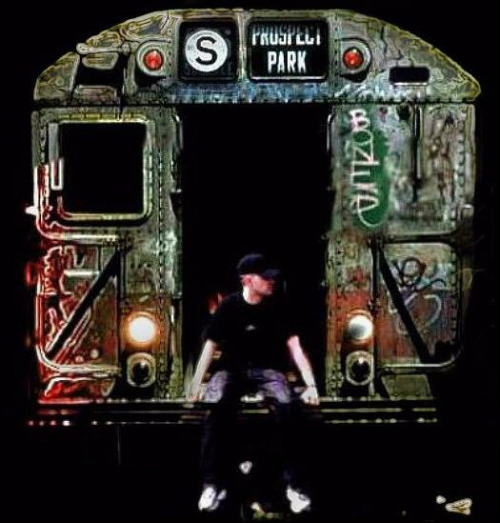
I was making the music, but I wanted to bring everybody who was also making music together and have a reason to make the music, which would be these big rave events.
I did [a party] called Atmosphere. It’s what we called Storm Rave before it was officially Storm Rave… [which] came about because we saw it as a change in the scene’s atmosphere—a storm.
The PLUR thing came about like five days after that, on the Fourth of July, 1990. We were gonna go paint the subway cars with the message, “Peace Love and Unity.” That was the movement. We went and painted the subway car, and it was always about that PLUR speech that everybody knows today, which comes from that original concept. Everybody was welcome, and we were all in it together.
We weren’t going to be able to get all of these people together into dirty warehouses without some of them getting into fights, without giving them the initial idea: Don’t come here if you want to start trouble.
It was very unique. I’m not saying there wasn’t peace, love and unity before that happened. I think with the scene, it needed to be done. We wanted people to know. The music is what it’s all about, and it held everybody together. We never had a problem. It’s amazing the unity among all those kids. The troublemakers would come, and they wouldn’t fight. As long as the music was playing and everybody was dancing, they knew something special was happening.
“I didn’t realize at the time that it was all going to become part of the history in such a way.”
The world that I come from, which is New York back before 9/11, we obviously had a huge rave scene in America. A lot of people don’t realize that EDM goes back to the rave scene, but PLUR is really the only thing that’s stayed the same all the way through.
Everything else changed, but the ideals of PLUR have remained true. It’s about looking out for people, and if somebody was in trouble, you helped them out.
A lot of people think it’s a myth, but these parties would’ve never grown to be the size they are now if that idea wasn’t being installed in these kids from day one. It was important that we did that.
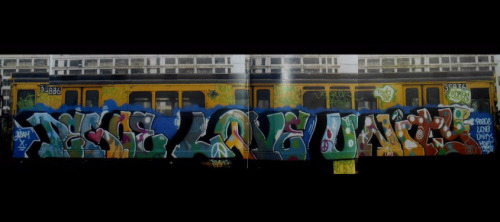
It was always about installing the peace and the love vibe. It was always like, don’t come and bring your drama to these parties. Come and escape the drama at these parties. So, that’s pretty much what we did.
Still, I always had police coming to investigate me at my record store, Sonic Groove. I wound up becoming friends with a detective from the 51st Precinct, and he told me that every sixth Saturday, whenever we did a Storm Rave party, the rate of car thefts in the neighborhood where we were in Brooklyn went down 37 percent. The cops figured out that all of the kids were coming to our parties instead of causing trouble. We were taking the element of the street that would be out robbing cars around town, but instead were raving at our parties. I just thought that was the most amazing thing I’d ever heard. We didn’t know what we were doing. We were just going on impulse.
“PLUR is the raver manifesto. People make fun of it, but they’ve always made fun of it. It’s real for those that live their lives that way.”
We never had a problem at Storm Rave. The whole speech that I made happened at a Back to Basics party. Back to Basics was the next set of promoters that came up after Storm Rave; they were throwing parties in the Bronx. They were outdoor parties, and a fight broke out. This was in like ‘93. It was a guy and a girl, and it was like the Tasmanian Devil spinning right up into where the DJ booth was in this park we were DJing at. We had the equipment on this IBM desk from like the 1960s. Those things were solid. So when they hit the desk, the record skipped, but nothing fell or anything. I was just so angry. I jumped up on this desk and grabbed the mic. There were three or four hundred people there, and it was in the park, so they knew who I was. So when I said, “If you don’t start showing some peace, love and unity, I’ll break your fucking faces,” it’s because we were friends. It’s not like I didn’t know these people. We’d never had a fight break out at one of our parties, and my feelings were hurt.
The party went on until 10 in the morning, so everything was fine after that. I didn’t realize at the time that it was all going to become part of the history in such a way.
Hyperreal was one of the first online rave chat groups on the internet. There was a girl, her name was Laura La Gassa, and she was one of the main people involved in it. They promoted the party where I made the PLUR speech. Now, I had a record called “PEACE, LOVE, UNITY (The STORMrave Story).” It came out in like May of ‘93. I had a box of those records at the party. This girl Laura, I don’t recall ever really meeting her, but I’m sure that she got that record that day.
She went into the whole thing on Hyperreal. If you look it up online, you’ll see the first kid gives his definition of PLUR. Nobody realized that it was originally the Peace Love Unity Movement, because we called it “PLUM” when we started in 1990. Then this Laura girl goes in and gives her definition of how [it became] PLUR—basically, the “M” got stripped out and the “R” got placed in there. The movement had already happened, so the “M” didn’t really matter anymore. The fight happened, and the “R” for “respect” became more important than the movement, because the movement needed respect.
If you look at the label of the record that I made, “PEACE, LOVE, UNITY (The STORMrave Story),” the first word until the title of the song said “respect” to this group Genlog, whom I had sampled. So if this girl Laura did have anything to do with putting the “R” there, she had the record, and it said “respect” on there. I just want the full credit.
California, especially with Insomniac, keeps the spirit of PLUR alive. Pasquale never stopped doing parties. It kept growing and growing, especially on the West Coast. California is why the American scene is as big as it is now.
PLUR is the raver manifesto. People make fun of it, but they’ve always made fun of it. It’s real for those that live their lives that way.
Follow Frankie Bones on Facebook | Twitter

